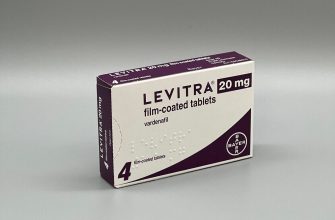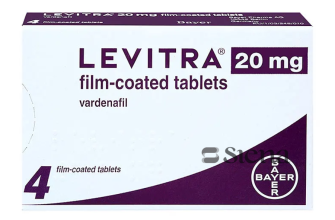Need prescription drugs? Start by checking reputable online Canadian pharmacies verified by PharmacyChecker. This independent verification service ensures pharmacies meet specific standards for safety and legitimacy, protecting you from counterfeit or substandard medications.
Consider factors beyond price. Look for pharmacies with transparent pricing, clear return policies, and readily available customer support. Compare medication costs across multiple verified pharmacies; prices can fluctuate. Always confirm the pharmacy’s licensing and registration with the relevant Canadian regulatory bodies.
Remember to consult your doctor before ordering medication online. They can advise on suitable medications and dosages, ensuring safe and effective treatment. Prescription requirements vary; some pharmacies require electronic prescriptions while others accept faxed copies. Check individual pharmacy requirements before placing your order.
Prioritize your health and safety. Use only verified pharmacies to avoid potential risks associated with counterfeit medications. Secure online transactions are key; look for sites using SSL encryption (HTTPS). Carefully review the pharmacy’s privacy policy to understand how your personal information will be handled.
- Canadian Pharmacies: A Comprehensive Guide
- Choosing a Reputable Pharmacy
- Understanding Prescription Requirements
- Cost Considerations and Savings
- Shipping and Delivery
- Dispute Resolution
- Medication Safety
- Finding Reputable Canadian Online Pharmacies
- Verifying Legitimate Canadian Pharmacy Licenses and Certifications
- Understanding Canadian Drug Pricing and Cost Savings
- Comparing Prescription Drug Prices: Canada vs. the US
- Factors Affecting Drug Prices
- Recommendations for Americans Seeking Lower Drug Costs
- Navigating the Importation of Prescription Drugs into Canada
- Potential Risks and Precautions When Using Canadian Online Pharmacies
- Medication Safety
- Pricing and Payment
- Customer Service and Support
- Ensuring the Safety and Authenticity of Medications from Canadian Pharmacies
Canadian Pharmacies: A Comprehensive Guide
Check if your prescription is eligible for import before ordering. Canadian pharmacies operate under strict regulations, ensuring medication safety and efficacy. Understand these regulations protect you.
Choosing a Reputable Pharmacy
Prioritize pharmacies registered with the Canadian International Pharmacy Association (CIPA). CIPA members adhere to rigorous quality standards, providing a higher degree of confidence. Verify the pharmacy’s license number on the provincial regulatory body’s website. Look for secure online ordering systems using HTTPS encryption to protect your personal information.
Understanding Prescription Requirements
Canadian pharmacies require valid prescriptions from licensed healthcare providers. A scanned copy is often sufficient; however, always check the pharmacy’s specific requirements. Be aware of potential delays related to prescription verification. Contact the pharmacy directly if you have questions regarding your prescription’s eligibility or the verification process. Expect to answer questions regarding your medical history for accurate dispensing.
Cost Considerations and Savings
Generic medications are usually significantly cheaper than brand-name alternatives. Factor in shipping costs when comparing prices. While price differences exist, avoid pharmacies offering prices drastically lower than competitors; this might indicate a lack of quality control. Read reviews from other customers to gauge the pharmacy’s reliability and customer service.
Shipping and Delivery
Shipping times vary depending on the pharmacy’s location and delivery service used. Track your order using the provided tracking number. Be prepared for potential customs delays, especially for international orders. Contact customer support if your order doesn’t arrive within the expected timeframe.
Dispute Resolution
Keep copies of your prescription, order confirmation, and any communication with the pharmacy. Contact the pharmacy directly if you experience any problems with your order. Familiarize yourself with CIPA’s dispute resolution process for addressing complaints.
Medication Safety
Always store medications as directed on the label. Never take medications prescribed for someone else. Consult a doctor or pharmacist before starting or stopping any medication. Report any adverse reactions promptly to both your doctor and the pharmacy.
Finding Reputable Canadian Online Pharmacies
Verify the pharmacy’s license with the relevant provincial regulatory authority. Each province maintains a registry; use their online search tools to confirm legitimacy.
Check for a physical address and contact information. Legitimate pharmacies will readily provide this, including a phone number you can call to speak with a pharmacist.
Examine the website for secure payment options (HTTPS) and privacy policies. A lack of these is a major red flag.
Look for the pharmacy’s accreditation through organizations like the Canadian International Pharmacy Association (CIPA), although CIPA membership alone doesn’t guarantee perfect trustworthiness.
Read independent reviews from verified users on trusted review sites. Be wary of sites with only overwhelmingly positive comments; look for a balanced perspective.
| Aspect | What to Look For | What to Avoid |
|---|---|---|
| Licensing | Provincial registration confirmation | Unlicensed or unregistered pharmacies |
| Contact Information | Clear physical address and phone number | Only email contact or vague location |
| Security | HTTPS encryption and clear privacy policy | Lack of security measures or unclear privacy policy |
| Accreditation | CIPA accreditation (consider in conjunction with other factors) | No accreditation and no apparent verification |
| Reviews | Balanced reviews from multiple sources | Overwhelmingly positive reviews or lack of reviews |
Compare prices from multiple verified pharmacies before making a purchase. Significant price discrepancies may indicate potential problems.
Consult your doctor before ordering any medication online, regardless of the source. They can advise on appropriate treatment and potential interactions.
Verifying Legitimate Canadian Pharmacy Licenses and Certifications
First, check the College of Pharmacists for the province or territory where the pharmacy claims to operate. Each province and territory maintains its own register of licensed pharmacies and pharmacists. You can find these registers online; search for “[Province/Territory] College of Pharmacists.” Verify the pharmacy’s name and address match the registry.
Next, inspect the pharmacy’s website for a clear display of their license number and registration details. Legitimate Canadian pharmacies will prominently feature this information. If you cannot readily find this information, proceed with caution.
Look for secure website features. A legitimate online pharmacy will use HTTPS (look for the padlock icon in the browser address bar) and may have a privacy policy clearly explaining how they handle your personal and health information.
Contact the pharmacy directly. Call their listed phone number to ask questions about their license and operations. A credible pharmacy will answer your questions openly and thoroughly. Note any discrepancies between their online presence and their phone conversations.
Finally, be wary of suspiciously low prices or pharmacies that aggressively solicit business. Unusually cheap medications could be counterfeit or substandard.
Understanding Canadian Drug Pricing and Cost Savings
Canadians often save significantly on prescription medications compared to Americans. This stems from several factors, including government regulation and bulk purchasing power.
- Patented Drugs: Prices for brand-name drugs are subject to government review and negotiation, limiting price increases. Expect to pay less than in the US, though costs still vary widely depending on the medication.
- Generic Drugs: Once patents expire, generic versions become available, often dramatically reducing costs. Canadian pharmacies heavily promote generic options, leading to substantial savings.
Here’s a breakdown of how you can potentially save money:
- Compare Prices: Use online pharmacy comparison tools to find the best deals on your prescriptions. Many Canadian pharmacies provide price quotes on their websites.
- Consider Generics: Ask your doctor about generic alternatives to brand-name medications. They’re usually just as effective and significantly cheaper.
- Utilize Mail-Order Pharmacies: Mail-order pharmacies frequently offer discounts for larger quantities. This is particularly beneficial for regularly prescribed medications.
- Explore Provincial Drug Plans: Check if you’re eligible for provincial drug plans offering coverage or subsidies. Programs vary by province.
- Negotiate: Don’t hesitate to ask your pharmacist about potential discounts or loyalty programs. Some pharmacies offer savings to regular customers.
While significant savings are possible, remember that individual experiences vary. Drug prices fluctuate, and specific costs depend on the medication, dosage, and pharmacy. Always confirm prices before ordering.
Comparing Prescription Drug Prices: Canada vs. the US
Canadians generally pay significantly less for prescription drugs than Americans. A 2023 study by the RAND Corporation showed that brand-name drugs in Canada cost 25% less on average, while generic drugs were 70% less expensive. This difference stems from various factors, including government price controls in Canada and the negotiation power of the Canadian healthcare system. American prices are often higher due to higher manufacturing and marketing costs, coupled with the absence of widespread government price regulation.
Factors Affecting Drug Prices
Several factors influence price disparities. Canada’s single-payer system allows for bulk purchasing and negotiation, driving down costs. The US, with its fragmented insurance system, faces higher administrative overhead and lacks the collective bargaining power to secure lower prices. Patent protection in the US allows pharmaceutical companies to set higher prices for longer periods. Importantly, the accessibility of generic drugs significantly impacts Canadian prices, as generic substitutes often offer far cheaper options.
Recommendations for Americans Seeking Lower Drug Costs
Consider using Canadian pharmacies legally importing medication through registered international pharmacies. Always verify the legitimacy of any online pharmacy before purchasing. Explore patient assistance programs offered by pharmaceutical companies. Compare prices across different US pharmacies, as local competition can influence cost. Generic alternatives offer a substantial cost savings, so always consult your doctor about substituting brand-name medication with a generic version. Finally, check with your insurance provider about coverage options, medication tiers, and mail-order pharmacies to find the most cost-effective solution. These strategies can make a considerable difference in managing prescription drug expenses.
Navigating the Importation of Prescription Drugs into Canada
Importing prescription drugs into Canada is complex; understand the regulations first. Check Health Canada’s website for the most up-to-date information.
You can legally import a 90-day supply of your medication for personal use if you have a valid prescription from a licensed physician. This supply must be for your own use only. Don’t try to import for others.
- Ensure your prescription is clearly legible and includes your name, the medication’s name and dosage, and the prescribing physician’s information.
- The medication packaging must be in its original container, clearly labeled with the name and dosage. Tampered packaging may delay or prevent entry.
- Declare all medications upon arrival in Canada; be honest and upfront with customs officials. Hiding medications is a serious offense.
- Keep copies of your prescription and any supporting documents, including proof of purchase.
Importing controlled substances, such as opioids, carries stricter regulations. Consult Health Canada’s website for specific requirements before attempting importation.
- Understand that there are limitations on the quantity you can import, depending on the medication. Exceeding these limits results in seizure.
- Improper documentation or incomplete declarations lead to delays or the medication being confiscated.
- Importing medications not approved for sale in Canada is prohibited and could have serious legal consequences.
If you require assistance navigating these processes, contact Health Canada directly. Their website provides contact information and resources to guide you through the regulations.
Potential Risks and Precautions When Using Canadian Online Pharmacies
Verify the pharmacy’s legitimacy through the College of Pharmacists of British Columbia or equivalent provincial regulatory bodies. Check for a physical address in Canada and a valid license number. Don’t use pharmacies without this verification.
Scrutinize the website for secure payment gateways (HTTPS). Look for a privacy policy detailing how your personal information is handled. Avoid sites lacking these security measures.
Medication Safety
Always confirm the medication’s authenticity. Compare packaging to images on the manufacturer’s website. Report any discrepancies to relevant authorities. Consider using only pharmacies that offer tracking for your order.
Understand potential customs delays and complications. International shipping may cause medication to expire before delivery. Account for this timing when ordering. Contact the pharmacy if the shipment is delayed beyond the expected timeframe.
Pricing and Payment
Compare prices across multiple reputable Canadian online pharmacies before purchasing. Be wary of unusually low prices, as this could indicate counterfeit medication. Use secure payment methods only, such as credit cards with fraud protection.
Be aware of hidden fees. Read all terms and conditions before making a purchase. Avoid pharmacies with unclear or exorbitant shipping costs.
Customer Service and Support
Look for easily accessible contact information, including phone numbers and email addresses. Check for customer reviews to gauge the pharmacy’s responsiveness and reliability. Avoid pharmacies lacking clear and easily accessible customer support.
Maintain records of all transactions and communications with the pharmacy. This documentation can prove helpful if issues arise. Save all order confirmations, tracking information, and correspondence.
Ensuring the Safety and Authenticity of Medications from Canadian Pharmacies
Verify the pharmacy’s license with Health Canada. This confirms their legal operation and adherence to Canadian regulations.
Check for a secure website; look for “https” in the URL and a padlock icon in your browser’s address bar. This indicates data encryption, protecting your personal information.
Inspect the packaging carefully upon delivery. Discrepancies in labeling, unusual seals, or damaged packaging should raise immediate concerns. Report them immediately.
Contact the pharmacy directly with questions. Legitimate pharmacies readily provide contact information and answer questions about their processes and medications.
Use reputable online pharmacy comparison websites. These sites often have verified listings and user reviews, helping you make informed decisions.
Compare prices cautiously. Unreasonably low prices might indicate counterfeit products. Consider value alongside cost.
Be wary of unsolicited offers. Legitimate pharmacies rarely engage in aggressive marketing or unsolicited email promotions.
Familiarize yourself with common signs of counterfeit drugs. This includes inconsistencies in pill shape, color, or markings.
Report suspicious activity to Health Canada. Helping authorities maintain medication safety benefits everyone.










